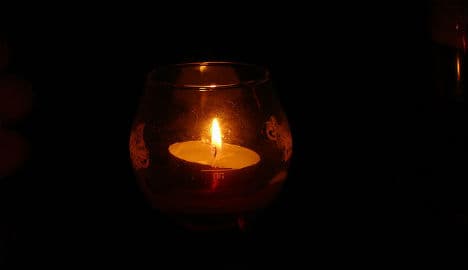Danish experts warn of 'hygge-junkie' health risk

Danish health experts have warned that the country’s so-called “hygge-junkies” are exposing themselves and others to serious health risks.
'Hygge', the Danish obsession usually translated into English as "cosiness", is this year’s global life-style trend.
So many books are being published on it in English this year (nine at last count), that one enterprising publisher has even rushed out a spoof version, “Say Ja to Hygge: How to find your special cosy place".
But rather than helping devotees improve their mental health via hot chocolate, subdued lighting, and low-key comfy furniture, as the new prophets of hygge claim, could it actually risk killing them?
Lars Gunnarsson, a professor at the Danish Building Research Institute, warns that the the pursuit of hygge at all costs has pushed Danish consumption of candles to a dangerous high.
“In Denmark we are amongst the world’s highest consumers of candles. It is quite extreme in an international context that we use so many,” he told TV2.
“I can see that this “hygge-junkie” conduct is very widely spread, judging by what I see among the people around me, and there’s no doubt that the particles given off by candles are very, very powerful.”
Gunnarsson warned that perhaps a majority of the 3,000 Danes who die each year as a result of particle pollution suffered their main exposure as a result of excess candle-burning.
“Candles could easily risk dominating all that,” he said. “And it’s only a little luxury and an old tradition which we can easily give up.”
Jørn Toftum, associate professor at the Centre for Indoor Environment and Energy at thet Technical University of Denmark, explained the risks hygge devotees were undergoing.
“Candles make a lot of particles when they burn, and those particles enter the lungs,” he told TV2. “Some of the particles are so tiny that they completely exit the deepest lung tissue and enter our bloodstream.”
Comments
See Also
'Hygge', the Danish obsession usually translated into English as "cosiness", is this year’s global life-style trend.
So many books are being published on it in English this year (nine at last count), that one enterprising publisher has even rushed out a spoof version, “Say Ja to Hygge: How to find your special cosy place".
But rather than helping devotees improve their mental health via hot chocolate, subdued lighting, and low-key comfy furniture, as the new prophets of hygge claim, could it actually risk killing them?
Lars Gunnarsson, a professor at the Danish Building Research Institute, warns that the the pursuit of hygge at all costs has pushed Danish consumption of candles to a dangerous high.
“In Denmark we are amongst the world’s highest consumers of candles. It is quite extreme in an international context that we use so many,” he told TV2.
“I can see that this “hygge-junkie” conduct is very widely spread, judging by what I see among the people around me, and there’s no doubt that the particles given off by candles are very, very powerful.”
Gunnarsson warned that perhaps a majority of the 3,000 Danes who die each year as a result of particle pollution suffered their main exposure as a result of excess candle-burning.
“Candles could easily risk dominating all that,” he said. “And it’s only a little luxury and an old tradition which we can easily give up.”
Jørn Toftum, associate professor at the Centre for Indoor Environment and Energy at thet Technical University of Denmark, explained the risks hygge devotees were undergoing.
“Candles make a lot of particles when they burn, and those particles enter the lungs,” he told TV2. “Some of the particles are so tiny that they completely exit the deepest lung tissue and enter our bloodstream.”
Join the conversation in our comments section below. Share your own views and experience and if you have a question or suggestion for our journalists then email us at [email protected].
Please keep comments civil, constructive and on topic – and make sure to read our terms of use before getting involved.
Please log in here to leave a comment.